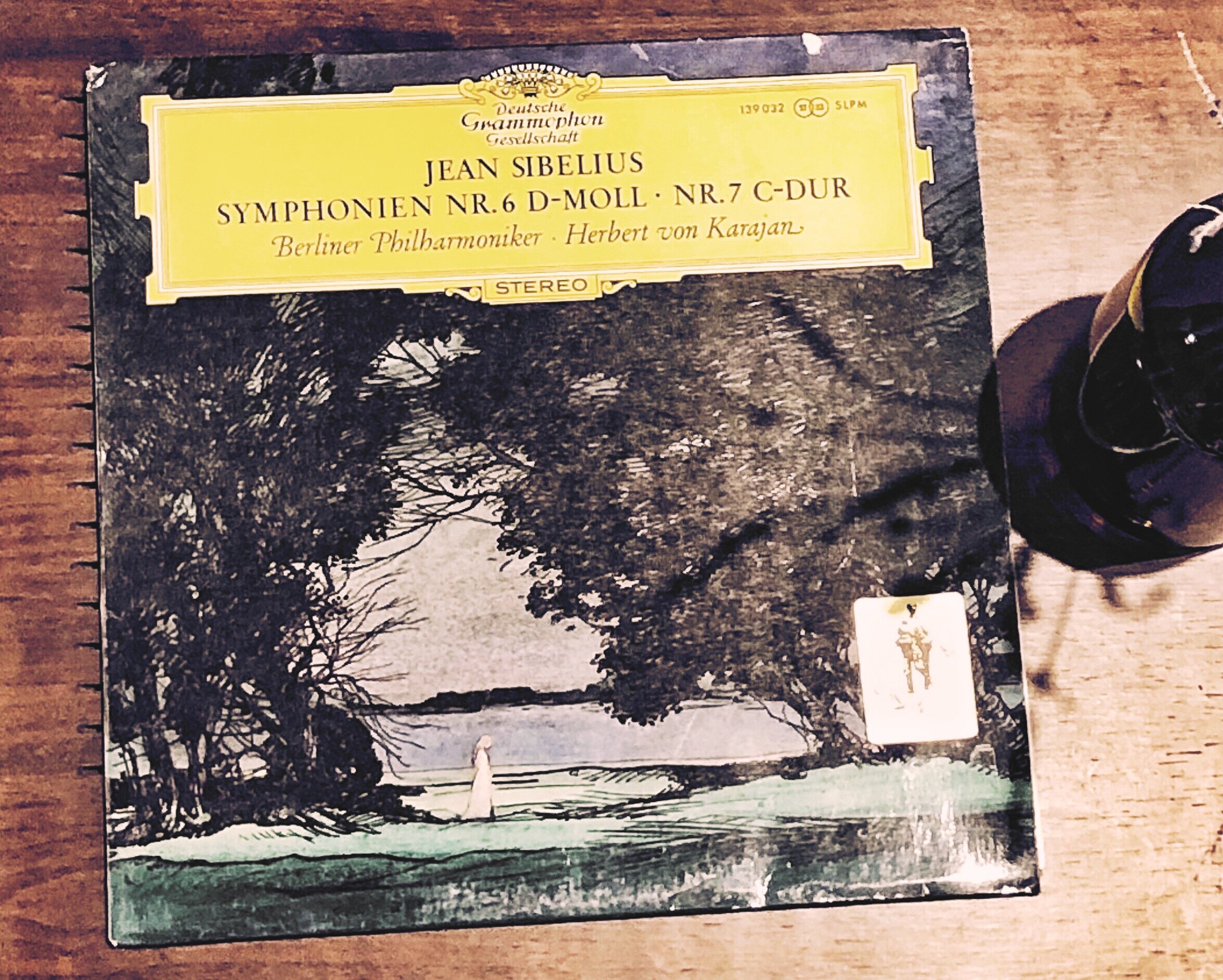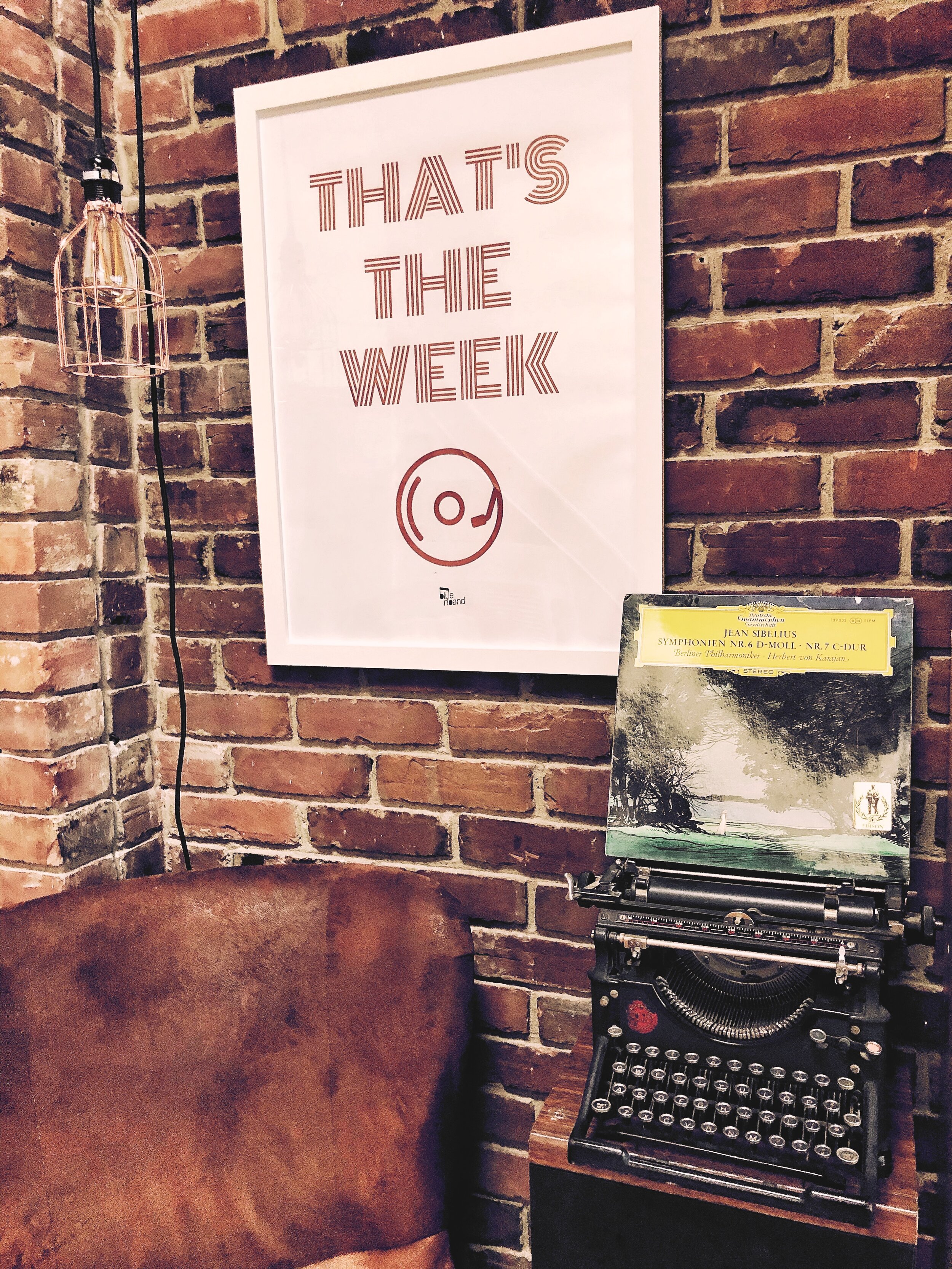Jean Sibelius (1865-1957)
Symphony No.6, Op.104
Berlin Philharmonic, conducted by Herbert von Karajan
Deutsche Grammophon recording, printed in Germany
Symphony No.6
1) Allegro molto moderato
2) Allegretto moderato
3) Poco vivace
4) Allegro molto
In case you missed it last week, a project I’ve been working on for a couple months now finally emerged: smART Magazine is a new online publication by Lighthouse Immersive, which casts a unique spotlight —via the contribution of a unique cast of writers and illustrators—on the intersection of the performing arts and digital creations. Lighthouse Immersive is the production company behind Toronto’s Immersive Van Gogh Exhibit, so the first issue of the magazine focuses on the sights and sounds and people that make the exhibit possible despite the pandemic circumstances. It was an honour to be asked by the company to develop this platform, and it’s been a pleasure to work with a very talented team of writers and illustrators to bring this magazine to reality. PLEASE check it out, it’s been a labour of love and I’ve been very lucky to be engaged in this partnership with a very innovative company in the arts.
The month-long affair with one of my favourite composers, Sibelius, continues this week with this Symphony No.6. It’s my first time hearing it. I listened to it approximately thirty times this week, at times attentively but for the most part in the background of something else: even after all these turns around the table I still can’t put a needle on the one point that this symphony makes. It seems that here Sibelius merely wrote a symphony for symphony’s sake. Of equal parts solemn and turbulent, defined by occasional oratorical exclamations that are inevitably subsumed by meandering wafts on strings.
Once in a while on here I’ll go through an entire week of listening to a piece on repeat and still come out on the other end not quite sure what I’ve just heard. I chose this Symphony No.6 as a stop on my survey of the composer’s symphonic output, though it’s apparent now why this is so seldom performed. Indeed why should it be performed? What’s left over from the similarly structured and intractable Symphony No.3 that still need this No.6 to express? Who would this be performed for aside from the slightly academic Sibelian? The contents of mini-lecture prefixing the MIT Symphony Orchestra’s performance above, by their rather well spoken maestro Adam Boyles, underline the slightly dry and academic textures of this piece. Aside from the contrast with what contemporary atonalists like Stravinsky were doing, it seems the best that can be said about this symphony are its experiments with the dorian scale, and so on.
After a four movements of spontaneous marches that lead nowhere, fury that dissipates into repetition, serenity that dissolves into agitation—the symphony slinks away on ellipses, a la timpani.
Not every swing is a hit, of course—perhaps the next time I hear it, it’ll hit different, and I’ll think slightly differently.
SONG OF THE WEEK: ‘Bluebird’ — Dave Monks
‘View of Delft’ Johannes Vermeer - 1660
This week felt just a bit more vibrant. I’m writing this after a hang with a friend who’s music connected us a few years back—she continues to abide by her love of the music community in this city, despite the year that has been. Despite the year that has been, I found myself thinking today, ‘what a beautiful day’, though the sun wasn’t particularly startling, nor the colour of the trees any less overwhelming. We sat with a panorama of tree and sky, inexplicably, I kept thinking of the sky over Delft—from that Vermeer painting I’d come across briefly in school (I remember thinking how plainly the clouds gestured optimism). I promptly fell in love with her music three years ago, and I trust nothing more than a friendship borne in music.
Throwback to: YR3 WEEK11, YR2 WEEK11
Click here for the full 2020/2021 roster of selected recordings


